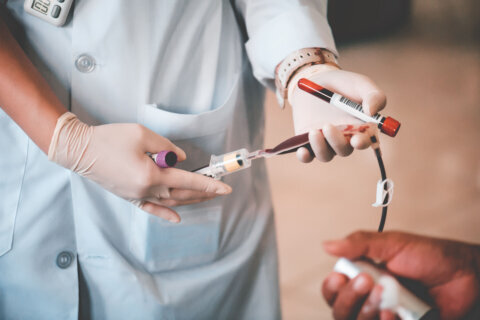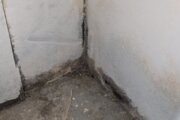Kids are filing back into classrooms, gymnasiums and cafeterias at public schools across Fairfax and Prince William counties Monday. And with them, students are bringing in and sharing pens, spiral notebooks and — yes, unfortunately — viruses.
“I don’t have to tell any parent that their kids are oftentimes a source of a lot of infections that spread through the household,” Andrew Pekosz, virologist at Johns Hopkins Bloomberg School of Public Health, said. “And that’s true with the flu. It’s also shown to be true with COVID.”
Pekosz said a new COVID variant called EG. 5 is emerging just as schools start back up. This one can better evade current vaccines and natural immunity. When asked if this should be cause for concern, he said it depends.
“EG. 5 doesn’t look like the kind of variant that would cause a huge surge, like we saw with Omicron when it first emerged,” Pekosz said. “So it’s something that scientists are concerned about. It’s something that the general public shouldn’t necessarily be concerned about.”
Despite this, he said it’s still a good idea to review the tools out there to keep your family safe from COVID.
First up are vaccines. Pekosz said that vaccine manufacturers are planning to release a new COVID vaccine this fall that will better protect against the EG. 5 strain.
“The American Pediatric Association does recommend COVID vaccines for all school-aged children,” Pekosz said. “It’s a safe vaccine. And I think it’s something that all parents should really consider.”
Second, COVID tests. Pekosz said at-home tests are still able to catch this new variant.
“At-home tests are still available,” Pekosz said. “They’re no longer being given out by the government for free, but they are available in virtually every pharmacy. And it’s a really good tool to have around at the house so you can get a quick answer about [whether] you’re COVID positive or not.”
Ultimately, Pekosz said everyone will have to assess their own risk and health situation.
“It’s important to note that the severe cases of COVID-19 are really happening in small sections of the population,” Pekosz said. “So individuals over the age of 60, individuals with secondary medical conditions that … predispose them to severe COVID. So I think those are the groups that it’s really important to remind them that tools are available.”








